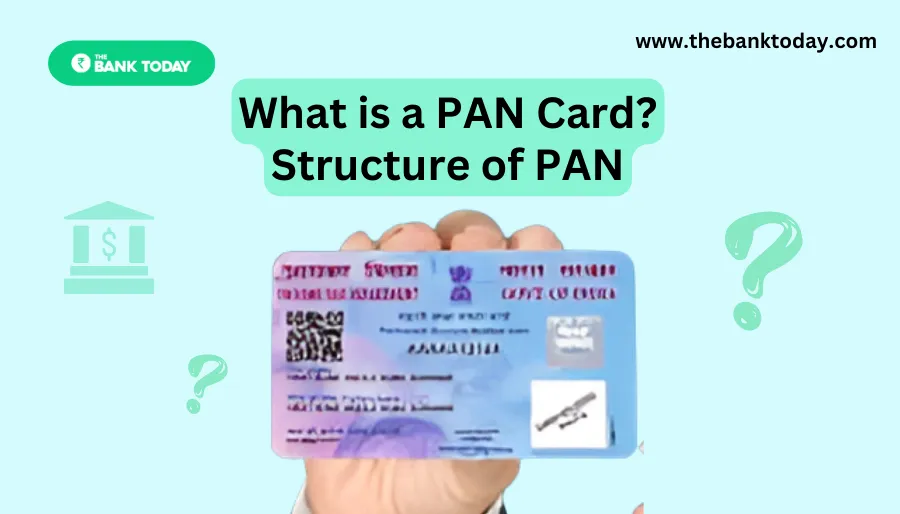What is a PAN Card: Permanent Account Number (PAN) is a ten-digit alphanumeric number, issued in the form of a laminated card, by the Income Tax Department, to any “person” who applies for it or to whom the department allots the number without an application.
PAN enables the department to link all transactions of the “person” with the department. These transactions include tax payments, TDS/TCS credits, returns of income/wealth/gift/FBT, specified transactions, correspondence, and so on. PAN, thus, acts as an identifier for the “person” with the tax department.
PAN was introduced to facilitate the linking of various documents, including payment of taxes, assessment, tax demand, tax arrears, etc. relating to an assessee, to facilitate easy retrieval of information and to facilitate the matching of information relating to investment, the raising of loans and other business activities of taxpayers collected through various sources, both internal as well as external, for detecting and combating tax evasion and widening of the tax base.
What is a PAN Card Structure
A typical PAN is AFZPK7190K.
- The first three characters i.e. “AFZ” in the above PAN are alphabetic series running from AAA to ZZZ
- The fourth character of PAN i.e. “P” in the above PAN represents the status of the PAN holder. “P” stands for Individual, “F” stands for Firm, “C” stands for Company, “H” stands for HUF, “A” stands for AOP, “T” stands for TRUST, etc.
- Fifth character i.e. “K” in the above PAN represents the first character of the PAN holder’s last name/surname.
- Next four characters i.e. “7190” in the above PAN are sequential numbers running from 0001 to 9999.
- Last character i.e. “K” in the above PAN is an alphabetic check digit.
WHY IS IT NECESSARY TO HAVE PAN?
It is mandatory to quote PAN on the return of income, and all correspondence with any income tax authority. From 1 January 2005, it will be mandatory to quote PAN on challans for any payments due to Income Tax Department.
It is also compulsory to quote PAN in all documents pertaining to the following financial transactions:-
- sale or purchase of any immovable property valued at five lakh rupees or more;
- sale or purchase of a motor vehicle or vehicle, [the sale or purchase of a motor vehicle or vehicle does not include two-wheeled vehicles, inclusive of any detachable side-car having an extra wheel, attached to the motor vehicle;]
- a time deposit, exceeding fifty thousand rupees, with a banking company ;
- a deposit, exceeding fifty thousand rupees, in any account with Post Office Savings Bank;
- a contract of a value exceeding one lakh rupees for the sale or purchase of securities;
- opening a bank account;
- making an application for the installation of a telephone connection (including a cellular telephone connection);
- payment to hotels and restaurants against their bills for an amount exceeding twenty-five thousand rupees at any one time ;
- payment in cash for the purchase of bank drafts or pay orders or banker’s cheques for an amount aggregating fifty thousand rupees or more during any one day;
- deposit in cash aggregating fifty thousand rupees or more with a bank during any one day;
- payment in cash in connection with travel to any foreign country of an amount exceeding twenty-five thousand rupees at any one time.
PAN – LEGAL FRAMEWORK
The legal authority for allotment and use of the new series of PAN is derived from Section 139A of the Income-tax Act, 1961. This section lays down the framework for PAN, e.g, who is required to apply for PAN, who else can apply for PAN, who will allot PAN, transactions where PAN is required to be quoted, use of PAN in TDS certificates and TDS returns, that one person can have only one PAN and the manner of applying for PAN.
The manner of applying for PAN is laid down in Rule 114 of the Income-tax Rules, 1962. This rule, amended in 2003, also specifies the copies of documents required to be submitted along with the PAN application as proof of identity and address of the PAN applicant.
Rule 114B lists down the documents in which PAN is required to be quoted while entering into specified transactions/activities. Persons who do not have PAN are exempted from quoting PAN on furnishing a declaration in Form 60. Rule 114C lists the persons to whom section 139A does not apply. These are persons who have agricultural income by furnishing declaration in Form 61, non-residents, and Central Govt./State Govt. and Consular offices, where they are payers.
The penalty of Rs.10,000/- is imposable u/s 272B for failure to comply with the provisions of section 139A.
So readers this is all about What is a Pan Card. To learn about Banking related services you can read these articles –
- What is the Use of Pan Card in 2023? Benefits Explained in a Simple Way
- How to link Pan Card with a Bank account in 2023?
- What is the Use of Pan Card in 2023? Benefits Explained in a Simple Way
- How to check the balance of Chhattisgarh Gramin Bank in 2023
- Application to link mobile number in the bank in 2023
- Application to link Aadhaar card in the bank in 2023
- What is the Difference Between Login Password And Profile Password in 2023?
- How to Create a Net Banking Password in 2023

